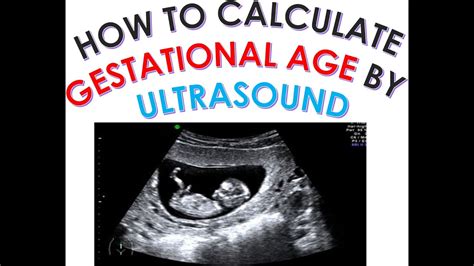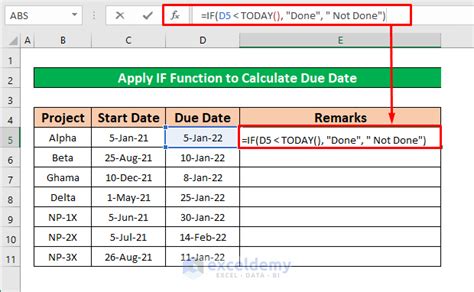Intro
Calculate your babys arrival date with ease using our 5 ways to calculate due date, including ovulation tracking, ultrasound dating, and more pregnancy calculation methods for an accurate estimated due date and a healthy pregnancy journey.
Calculating the due date of a pregnancy is a crucial aspect of prenatal care, as it helps expectant mothers and healthcare providers prepare for the arrival of the baby. The due date, also known as the estimated date of confinement (EDC), is typically calculated based on the first day of the last menstrual period (LMP) or through various other methods. Understanding the different ways to calculate the due date can help individuals better comprehend the pregnancy timeline and make informed decisions about their care.
The importance of accurately calculating the due date cannot be overstated, as it affects the entire pregnancy journey. From scheduling prenatal appointments to planning for the baby's arrival, knowing the due date is essential. Moreover, an accurate due date calculation can help identify potential complications early on, allowing for timely interventions and ensuring the best possible outcomes for both the mother and the baby.
In recent years, advancements in medical technology and the development of new calculation methods have improved the accuracy of due date predictions. However, it is essential to remember that the due date is only an estimate, and the actual date of delivery can vary. Despite this, calculating the due date remains a vital part of pregnancy care, and individuals should be aware of the various methods available to them.
Introduction to Due Date Calculation Methods

There are several methods to calculate the due date, each with its own advantages and limitations. The most common methods include the LMP method, ultrasound dating, and the Naegle's rule. Understanding these methods can help individuals make informed decisions about their pregnancy care and prepare for the arrival of their baby.
Understanding the Last Menstrual Period (LMP) Method
The LMP method is the most commonly used technique for calculating the due date. This method assumes that ovulation occurs on day 14 of a 28-day menstrual cycle, and the fertilized egg implants in the uterus around 6-10 days after fertilization. By counting forward 280 days (or 40 weeks) from the first day of the LMP, healthcare providers can estimate the due date.Calculating Due Date Using Ultrasound

Ultrasound dating is another method used to calculate the due date. This technique involves measuring the size of the fetus during an ultrasound examination, typically performed between 7-10 weeks of gestation. By using a standardized growth chart, healthcare providers can estimate the gestational age of the fetus and calculate the due date.
Naegle's Rule and Other Calculation Methods
Naegle's rule is a simple method for calculating the due date, which involves counting forward 7 days from the first day of the LMP, then adding 9 months. This method is less accurate than the LMP method or ultrasound dating but can provide a rough estimate of the due date. Other calculation methods, such as the Mittendorf-Williams rule and the Parikh rule, also exist, although they are less commonly used.5 Ways to Calculate Due Date

Here are 5 ways to calculate the due date:
- LMP method: Counting forward 280 days (or 40 weeks) from the first day of the LMP
- Ultrasound dating: Measuring the size of the fetus during an ultrasound examination and using a standardized growth chart to estimate the gestational age
- Naegle's rule: Counting forward 7 days from the first day of the LMP, then adding 9 months
- Mittendorf-Williams rule: Using a formula that takes into account the length of the menstrual cycle and the date of the LMP
- Parikh rule: Using a formula that takes into account the date of the LMP and the length of the menstrual cycle
Benefits and Limitations of Each Method
Each due date calculation method has its benefits and limitations. The LMP method is simple and widely used, but it assumes a regular 28-day menstrual cycle, which may not be accurate for all women. Ultrasound dating is more accurate, but it requires access to ultrasound technology and may not be available in all settings. Naegle's rule and other calculation methods are less accurate but can provide a rough estimate of the due date when other methods are not available.Practical Applications of Due Date Calculation

Calculating the due date has several practical applications in pregnancy care. It helps expectant mothers and healthcare providers prepare for the arrival of the baby, schedule prenatal appointments, and identify potential complications early on. Accurate due date calculation can also help individuals plan for maternity leave, make arrangements for childcare, and prepare their homes for the new baby.
Common Challenges and Complications
Despite the importance of due date calculation, several challenges and complications can arise. Irregular menstrual cycles, multiple gestations, and fetal growth restrictions can affect the accuracy of due date calculations. Additionally, access to healthcare services and ultrasound technology can be limited in some settings, making it difficult to obtain an accurate due date calculation.Future Directions in Due Date Calculation

Advances in medical technology and the development of new calculation methods are expected to improve the accuracy of due date predictions. The use of artificial intelligence and machine learning algorithms may also play a role in due date calculation, allowing for more personalized and accurate predictions. As research continues to evolve, it is essential to stay informed about the latest developments in due date calculation and their implications for pregnancy care.
Conclusion and Final Thoughts
Calculating the due date is a critical aspect of pregnancy care, and understanding the different methods available can help individuals make informed decisions about their care. While each method has its benefits and limitations, accurate due date calculation can help expectant mothers and healthcare providers prepare for the arrival of the baby and identify potential complications early on. As research continues to evolve, it is essential to stay informed about the latest developments in due date calculation and their implications for pregnancy care.What is the most accurate method for calculating the due date?
+The most accurate method for calculating the due date is ultrasound dating, which measures the size of the fetus during an ultrasound examination and uses a standardized growth chart to estimate the gestational age.
Can I calculate my due date using an online calculator?
+Yes, there are several online calculators available that can help you estimate your due date. However, it's essential to remember that these calculators are only estimates and may not be entirely accurate.
How often should I have prenatal check-ups to monitor my due date?
+The frequency of prenatal check-ups varies depending on the stage of pregnancy and individual circumstances. Typically, expectant mothers have prenatal check-ups every 4-6 weeks during the first and second trimesters, and every 2-3 weeks during the third trimester.
We hope this article has provided you with a comprehensive understanding of the different methods for calculating the due date. If you have any further questions or would like to share your experiences, please don't hesitate to comment below. You can also share this article with your friends and family to help them better understand the importance of due date calculation in pregnancy care.
